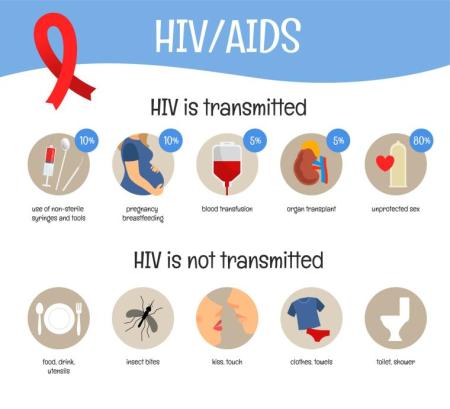HIV (Human Immunodeficiency Virus) and AIDS (Acquired Immunodeficiency Syndrome) are related conditions that affect the immune system. HIV is a virus that attacks the immune system, specifically targeting CD4 cells (T cells), which are crucial for the body's ability to fight off infections. If left untreated, HIV can weaken the immune system to the point where the body is no longer able to defend against infections and diseases. When the immune system becomes severely compromised, HIV infection progresses to AIDS.
AIDS is the final stage of HIV infection, characterized by a significantly weakened immune system and the presence of opportunistic infections or certain cancers. The transition from HIV to AIDS is marked by a significant drop in CD4 cell count or the development of specific opportunistic infections. HIV is primarily transmitted through contact with certain body fluids, such as blood, semen, vaginal fluids, and breast milk. Common modes of transmission include unprotected sex, sharing needles, and perinatal transmission from mother to child during childbirth or breastfeeding.
While there is currently no cure for HIV/AIDS, antiretroviral therapy (ART) can effectively control the virus and prevent the progression to AIDS. With proper treatment and care, people living with HIV can live long and healthy lives. Prevention strategies, such as practicing safe sex, using sterile needles, and getting tested regularly for HIV, are crucial in reducing the spread of the virus. HIV/AIDS awareness, education, and access to healthcare services are key in combating stigma, promoting early diagnosis, and improving the quality of life for individuals affected by the virus.



